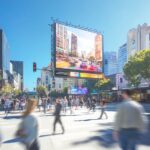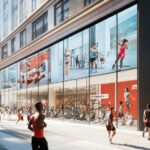In today’s competitive retail landscape, understanding customer behavior is crucial for success.
Foot traffic data provides invaluable insights into how customers navigate your store, allowing for optimized layouts, improved store design, and an enhanced shopping experience.
This article explores the methods used to collect foot traffic data, the benefits it offers for improving store layouts through strategic layout optimization, and compelling case studies that showcase its transformative power.
Discover practical strategies to implement this data effectively and drive sales in your retail space.
Explanation of Foot Traffic Data and Its Importance in Retail Stores
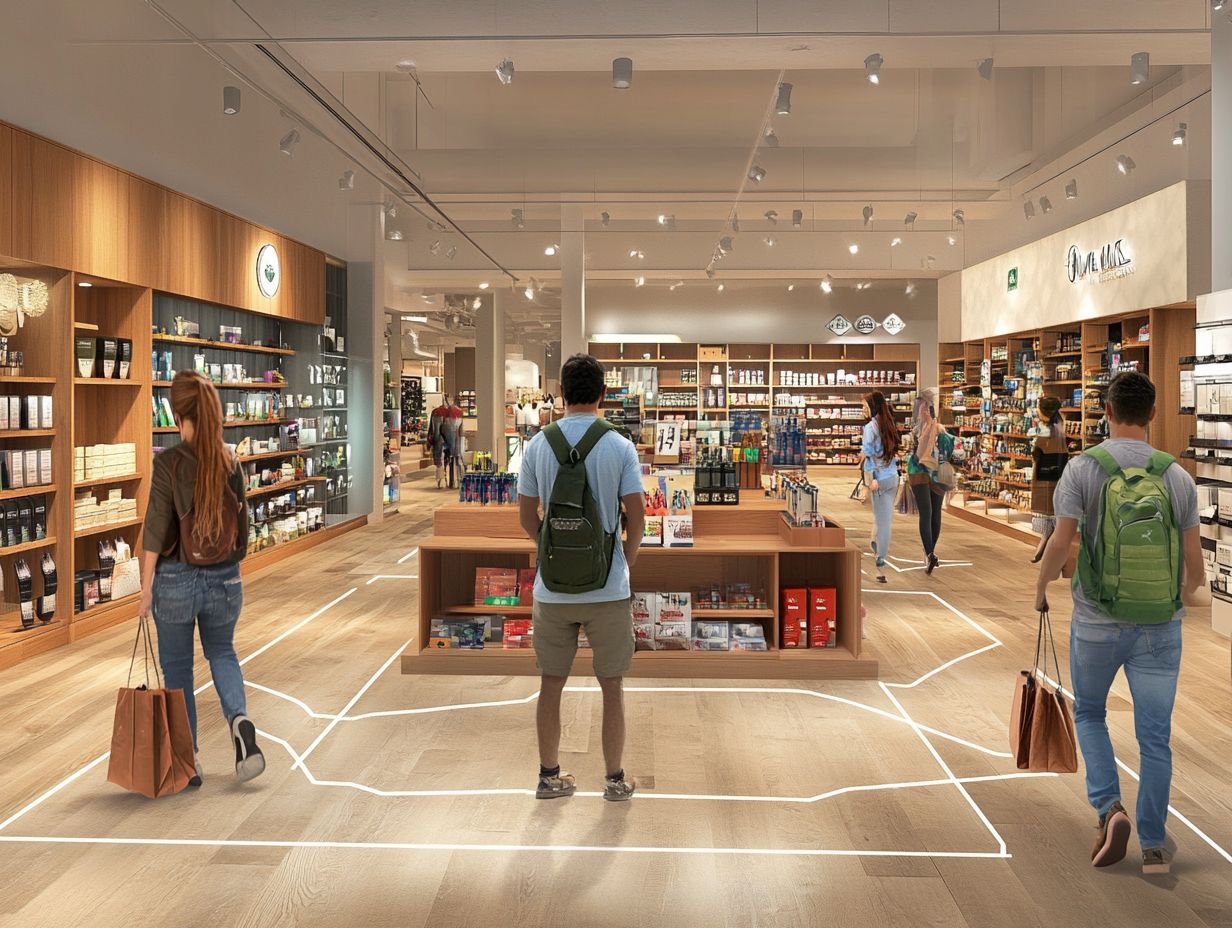
Foot traffic data is essential for understanding customer behavior in retail stores, providing valuable insights that can drive sales optimization and enhance the shopping experience. Analyzing foot traffic data enables retailers to make informed decisions about store layout, merchandising strategies, and product placement.
Through the use of analytics and heatmaps, retailers can uncover consumer preferences, leading to improved space utilization and more effective inventory management. In today’s highly competitive retail environment, foot traffic analytics play a crucial role in optimizing store performance and boosting customer satisfaction.
This data not only reveals busy times and peak hours but also helps identify high-traffic areas within the store. Retailers can strategically position popular items in these areas to maximize visibility. For instance, a clothing retailer may notice that shoppers often linger near the entryway and may decide to showcase seasonal sales in that space.
Furthermore, analyzing foot traffic can shed light on the effectiveness of in-store displays and promotions, guiding better-targeted marketing strategies and improving customer engagement.
As retailers increasingly rely on advanced analysis of customer behavior in their operations, foot traffic data will become an integral tool for enhancing sales, refining promotional strategies, and improving the overall shopping experience through better store accessibility and traffic trends analysis.
How Foot Traffic Data is Collected
Foot traffic data collection employs various innovative technologies and methods to provide retailers with insights into visitor engagement and the customer journey within the store, utilizing location intelligence and spatial analytics.
Key methods used to gather essential information on traffic patterns and customer visit frequency include footfall analysis and use of demographic data:
- Sensor technology
- Mobile tracking
- Point-of-sale analytics
Each of these approaches enables the collection of critical data that can be analyzed to enhance the understanding of traffic flow and optimize store layout through improved store layout design and space planning.
Furthermore, the integration of retail technology and big data analytics assists businesses in improving their decision-making processes and overall retail strategy.
Technologies and Methods Used for Collecting Foot Traffic Data
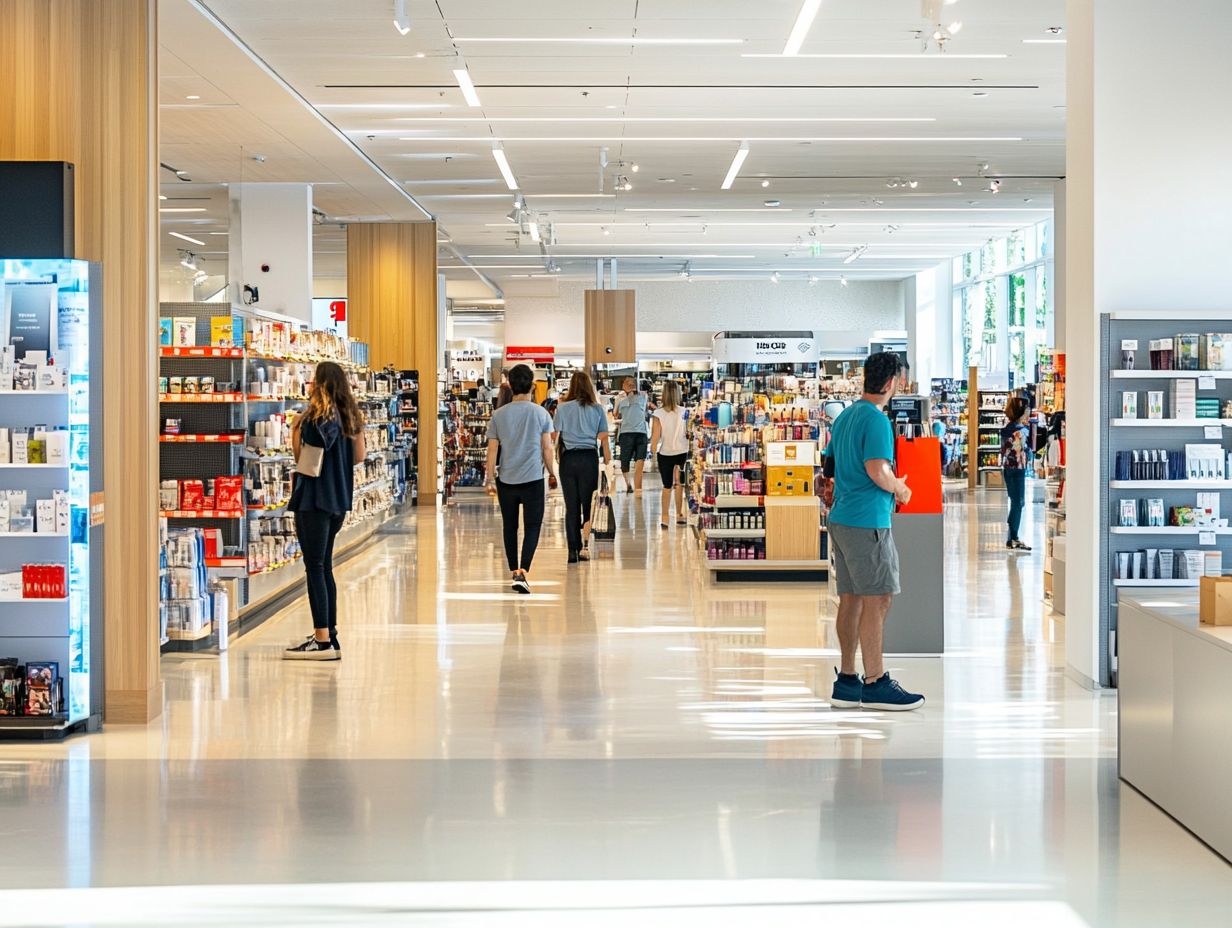
In the retail industry, foot traffic data is collected using various technologies and methods, enabling comprehensive spatial analysis and customer segmentation. Tools like video analytics, heatmapping, and mobile tracking applications provide valuable insights into in-store movement and shopping behavior, revealing traffic patterns within retail environments. These data collection methods can enhance marketing strategies and improve customer experiences through well-considered choices.
Moreover, the techniques that capture details about visitor interactions not only streamline operational efficiency but also contribute to optimizing store layouts. For instance, cameras equipped with machine learning algorithms can monitor customer traffic in real-time, while sensors at entry and exit points gather data on peak visitor times.
An example of this is a large grocery chain in the UK that utilized heatmap technology to track customer movements throughout their store, resulting in a layout redesign that made products more visible and accessible. Additionally, mobile app analytics enable retailers to understand shopper pathways and areas of interest, which can inform targeted promotions and inventory planning. This analysis also helps retailers comprehend how customers engage with the app itself.
When combined, these technologies offer a multifaceted view of consumer behavior, driving sales and enhancing customer loyalty.
Benefits of Using Foot Traffic Data in Retail Store Layouts
Utilizing foot traffic data in retail store layouts offers numerous advantages, including an enhanced customer experience and increased sales. This data allows businesses to redesign their store layouts based on actual foot traffic and customer engagement.
By monitoring and analyzing traffic patterns and customer behavior, businesses can gain insights into customer preferences, enabling them to improve or redesign their layouts for better product exposure, in-store navigation, and optimal placement of frequently purchased items.
As a result, an improved shopping experience can lead to higher conversion rates and increased customer retention. Overall, optimizing layouts using foot traffic data significantly enhances retail performance and return on investment.
Improved Customer Experience and Increased Sales
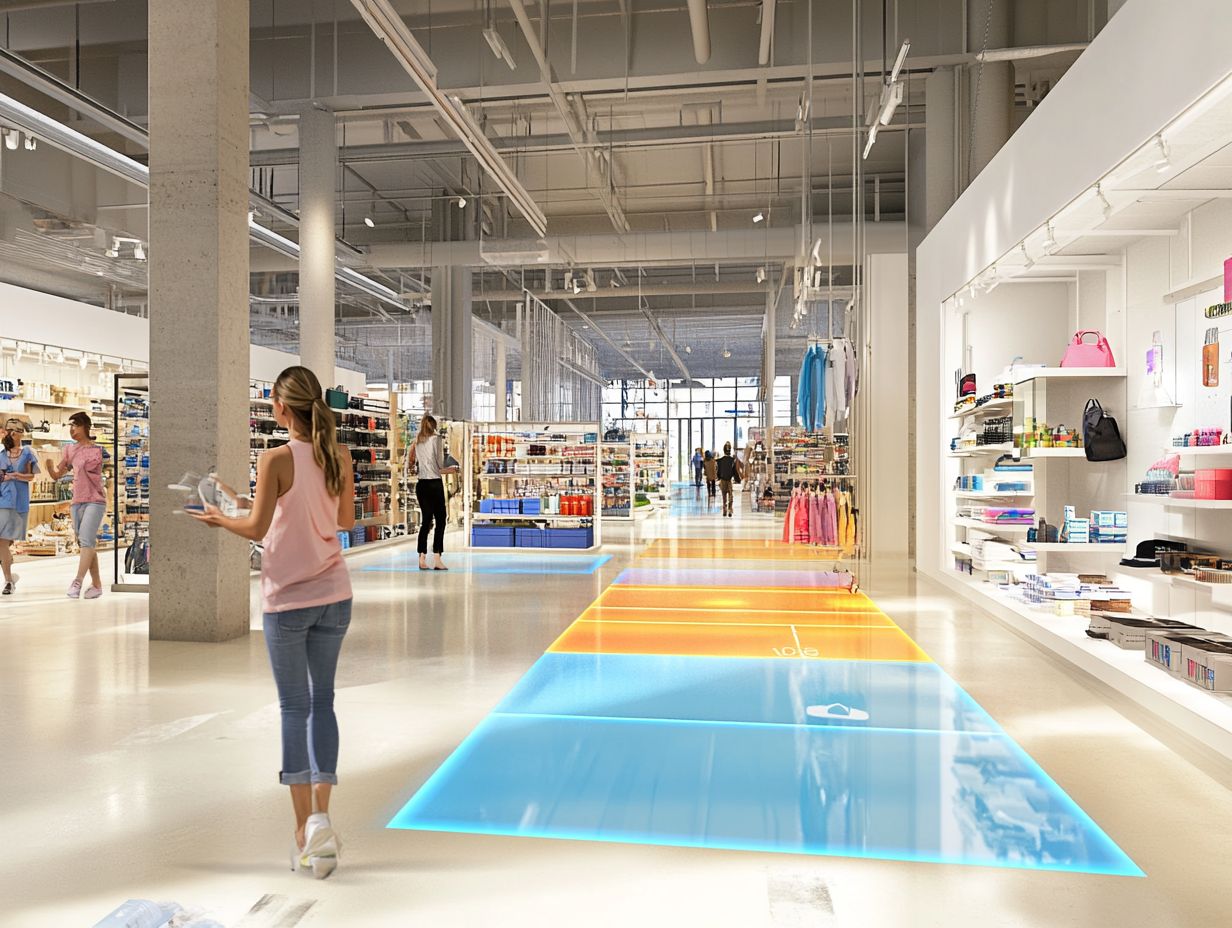
One of the key benefits of using foot traffic data is the improvement of customer experience. This data can be instrumental in optimizing sales and enhancing customer behavior, such as increasing footfall and the time spent in retail environments.
By analyzing customer engagement and foot traffic patterns, stores can reorganize their layouts to enhance product visibility and accessibility. This alignment between customer experience and store layout results in improved retail metrics, including higher customer conversion rates and increased average basket sizes. A better store experience encourages customers to return, thereby fostering brand loyalty.
Customers are able to navigate the store more effectively and are drawn to specific areas. For instance, to encourage deeper exploration of the store, high-volume items can be strategically placed near the entrance. Additionally, high-volume end-cap displays featuring seasonal or promotional products can be positioned in areas with the highest foot traffic. Understanding the amount of time customers spend in various sections of the store can help identify the areas that engage them the longest, which can inform future design decisions.
Two important metrics to track in order to enhance customer experience and sales performance are “time in zone” and the sales of high-volume products.
“Time in zone” refers to the duration customers spend in a specific part of the store, such as the checkout line, service station, or a particular aisle. Meanwhile, measuring the sales of high-volume items helps assess the effectiveness of products placed in high-traffic areas. By analyzing the impact of layout adjustments using these metrics, retailers can refine their future planning strategies.
Transforming Retail Store Layouts with Foot Traffic Data
Transforming retail store layouts by utilizing foot traffic data has proven beneficial for numerous businesses. Case studies show that successful layout redesigns based on actionable retail insights have yielded positive outcomes.
By analyzing foot traffic data, retailers can identify high-traffic areas and enhance their designs to create a more enjoyable shopping experience through strategic merchandising and adaptable layouts.
This approach can lead to improved traffic flow and increased customer satisfaction while fostering a more engaging and experiential retail environment. In today’s competitive retail landscape, employing analytics tools for layout optimization is essential.
Examples and Case Studies of Successful Store Layout Transformations
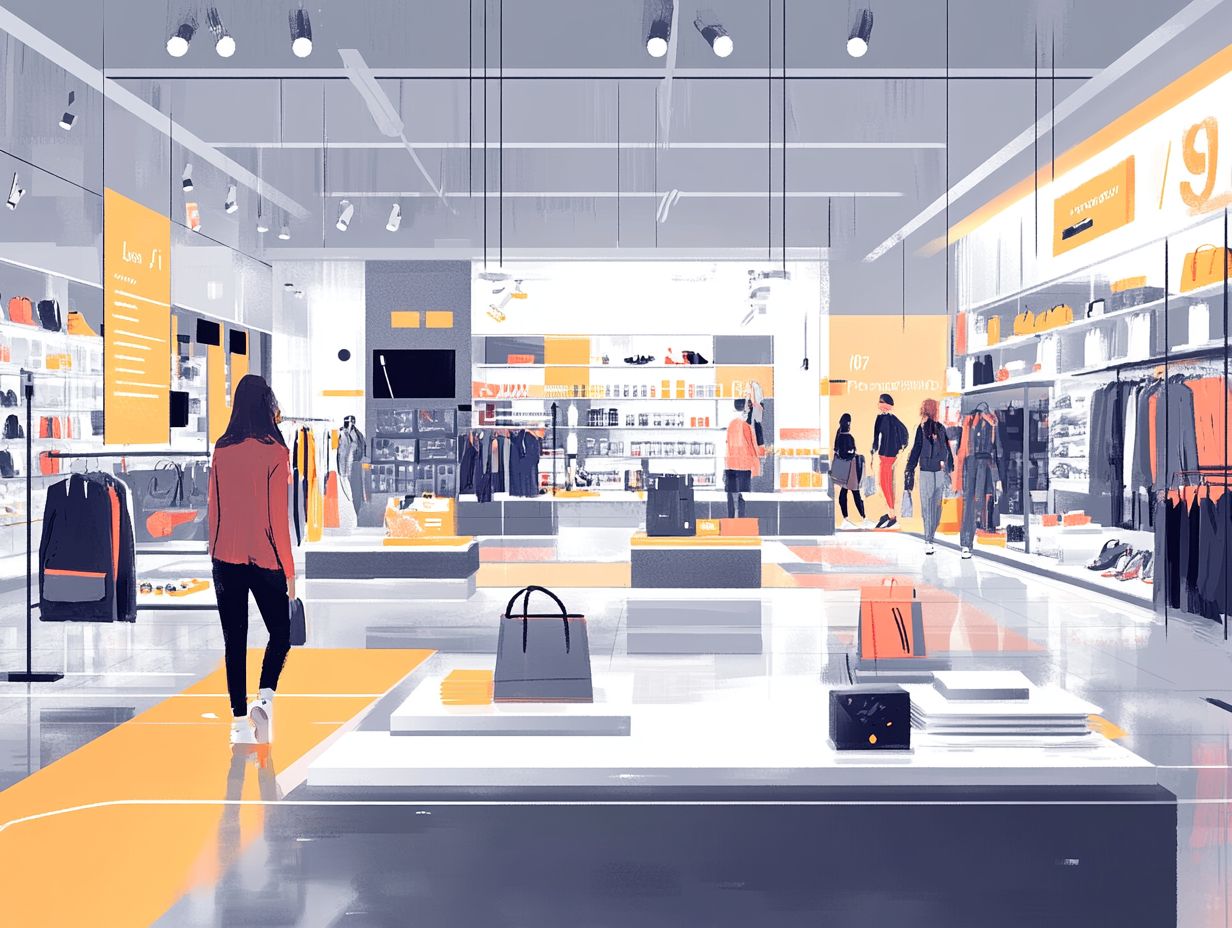
Several case studies demonstrate that changes to store layouts based on foot traffic data have led to improved customer satisfaction and enhanced traffic flow.
For instance, an electronics retailer experienced a 20% increase in sales within the first month after redesigning its store layout based on foot traffic analysis. By examining foot traffic data, the company identified the areas with the most visitors, enabling them to strategically position high-demand items to encourage impulse purchases.
Similarly, a home goods retailer developed a seasonal layout based on foot traffic metrics, which enhanced customer engagement and created a more enjoyable shopping experience.
These case studies illustrate how leveraging foot traffic data can lead to highly effective and tailored retail strategies that boost profitability, enhance customer satisfaction, and improve checkout efficiency.
Implementing Foot Traffic Data in Your Retail Store
Implementing foot traffic data in retail stores involves the strategic collection, analysis, and integration of data into store practices to enhance layout and overall business performance.
The process begins with retailers selecting appropriate analytics tools to capture traffic data. These tools facilitate the collection of data, which is then analyzed to provide insights that inform the optimal store layout and inventory placement decisions. This analysis is also utilized for promotional planning and sales forecasting.
Once foot traffic data is integrated into these aspects of business operations, it fosters a customer-centric environment that encourages visitor engagement and ultimately leads to a higher conversion rate. A well-defined implementation strategy for foot traffic data ensures that this information is leveraged effectively to benefit the business.
Steps and Strategies for Incorporating Foot Traffic Data in Store Layouts
Incorporating foot traffic data and other spatial analytics into store layouts requires a series of strategic steps designed to enhance decision-making and optimize retail environments, leveraging customer behavior insights and data analytics.
-
Step 1: Choose the Right Tools
The first step in integrating foot traffic data into retail store layouts is to utilize appropriate tools, such as heatmap software, traffic counters, and customer engagement solutions. These tools enable retailers to gather and analyze data on customer foot traffic, shopper insights, and behavioral analysis within their stores.
-
Step 2: Analyze the Data
After collecting data with the chosen tools, retailers must conduct a thorough traffic analysis to effectively incorporate foot traffic insights into store layouts. This analysis involves examining customer movement patterns, traffic trends, and shopping behavior throughout the store. For instance, if customers tend to spend more time at the back of the store, it may suggest that this area is ideal for placing specific merchandise, enhancing product visibility. Conversely, the front of the store could be optimized for add-on sales products at the point of sale.
-
Step 3: Use the Data to Rearrange the Store
Based on the traffic analysis, retailers can rearrange their store layout, merchandising, and displays. Insights gained from the analysis will reveal the best locations for selling particular merchandise, considering shopper demographics and product placement strategies, and highlight areas with heavy foot traffic, allowing retailers to optimize their merchandising strategies accordingly for improved sales performance.
-
Step 4: Incorporate Feedback Loops
While foot traffic data is valuable, incorporating feedback loops through customer surveys, demographic data, and direct observation can enhance the effectiveness of integrating this data into store layouts. Consumer preferences can evolve over time, so continuously seeking feedback and analyzing traffic patterns helps retailers adapt their layouts and merchandising to better meet customer needs, improving customer satisfaction.
-
Step 5: Continuously Monitor and Evaluate
The final step is to monitor the effectiveness of the new layout in real-time. Retailers should track performance metrics, such as sales and customer engagement, both before and after making adjustments, using retail metrics and KPI metrics. This ongoing assessment will allow retailers to evaluate the impact of any changes and make necessary modifications. By following these steps, retailers can successfully incorporate foot traffic data into their store layouts, creating an environment that responds to customer needs and preferences, enhancing the customer journey.
Summary of the Benefits and Importance of Foot Traffic Data and Store Layout Design in Retail Stores
Foot traffic data is a vital resource for retailers, offering essential insights into customer behavior that are crucial for optimizing sales and enhancing the shopping experience through effective store layout design.
By analyzing this data, store owners can identify peak shopping times, which helps inform staffing needs and marketing strategies to better align with customer demand and improve operational efficiency.
Understanding foot traffic allows store owners to recognize customer buying patterns and traffic volume, enabling them to improve inventory management and ensure that trending items are available when customers are ready to make a purchase.
This data-driven approach benefits not only the bottom line for store owners but also enhances the overall shopping experience for customers by improving shopping patterns and customer flow.
Looking ahead, retailers should embrace the opportunities that these analytical tools and retail technologies present for store efficiency and competitive analysis.

